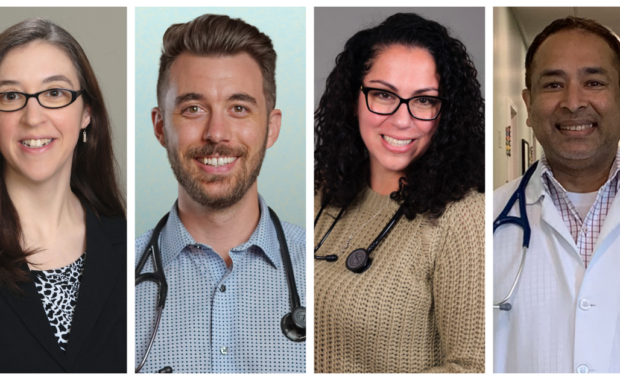Playing for the Team
Former WNBA Player Trades in Ball for Stethoscope
By Hillel Kuttler
When Brooke Smith starred at center for the Stanford University’s women’s basketball team from 2004 to 2007, she featured an unorthodox move that remains rare in both the men’s and women’s games: a hook shot, launched starting with one’s side or back to the hoop and with the flick of just one hand held high overhead.
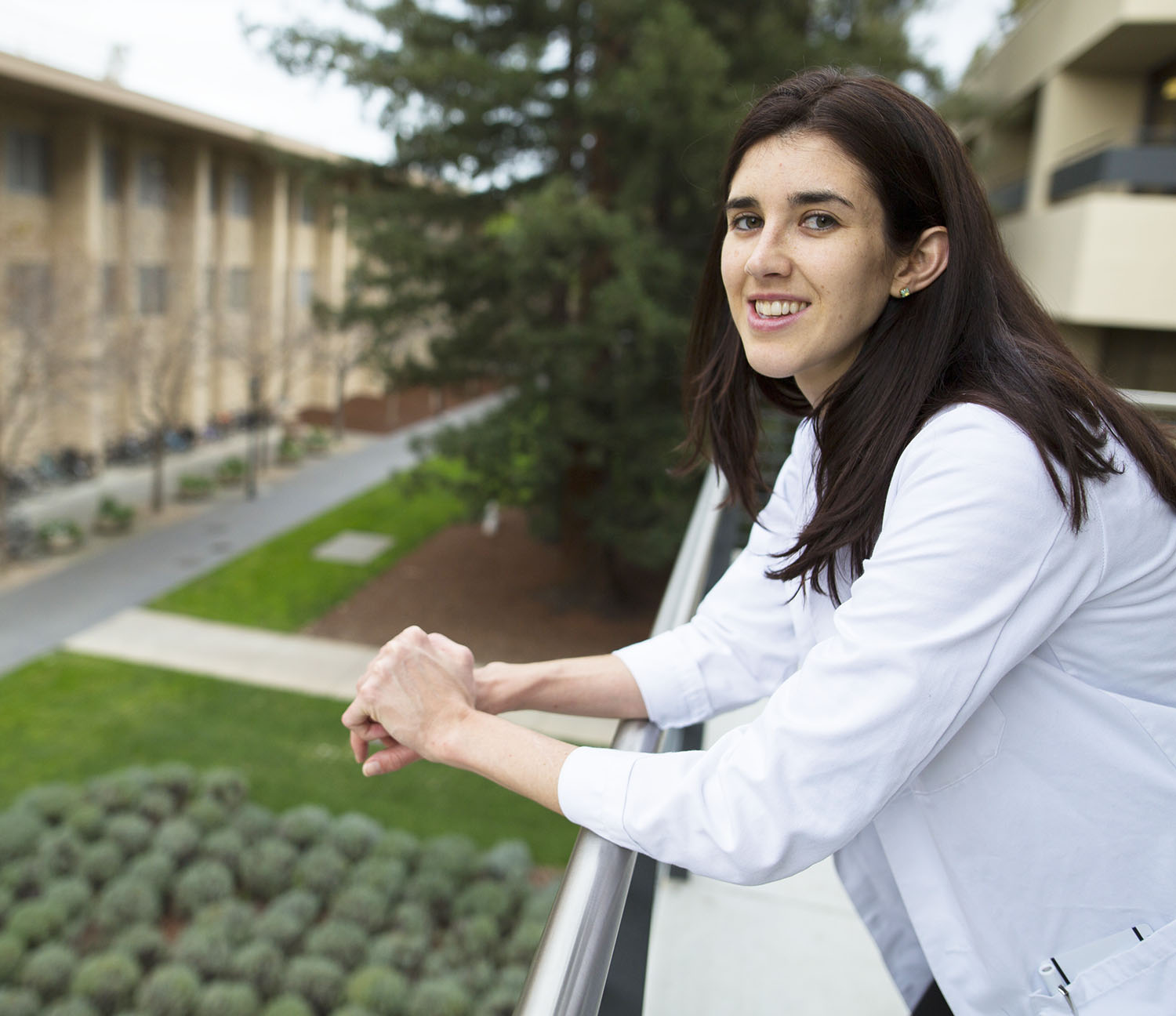
She was known as “Brooke the Hook.”
Starting at about age 10, Smith developed and perfected the hook by necessity, as her only means of releasing a shot beyond the reach of her 6’7″ stepfather, Jan Brennan, who himself had played college basketball.
Handling challenging situations, thinking on her feet and finding a way around obstacles will also serve Smith well in her chosen career as a PA. Smith, 32, recently graduated from the Stanford PA program and passed the PANCE with flying colors.
After basketball, serving patients “seems like a familiar path” to follow, Smith said.
Maybe that’s because, like a harmonious basketball squad, Team Smith can boast five members being on the same page, career-wise. Brooke’s older sister, Whitney Wriston, is a PA in family medicine in Vancouver, Wash. In the sisters’ northern California hometown of San Anselmo, an hour’s drive north of Stanford, their mother, Alison, is a physical therapist; their father, Douw, is a rolfer (a practitioner of a kind of manipulative therapy based on gravity); and Brennan advises the Stanford ValleyCare health system and other nonprofit organization clients on retirement planning. (Wriston joked that their older brother, Fletcher, who works in security
rather than in a health-related field, is the family’s “outlier.”)
Having a sister join her in the profession is “great,” Wriston said, adding: “We can talk about certain things and relate in a way that I usually can
relate only with co-workers. It’s a bond.”
“I think that [being a PA] is a great profession,” Smith said. “I like that you have a certain amount of autonomy, work within a team environment and have the flexibility to do different things in a career. All of those things together really led me to the profession.”
Where Player and Provider Mindsets Meet
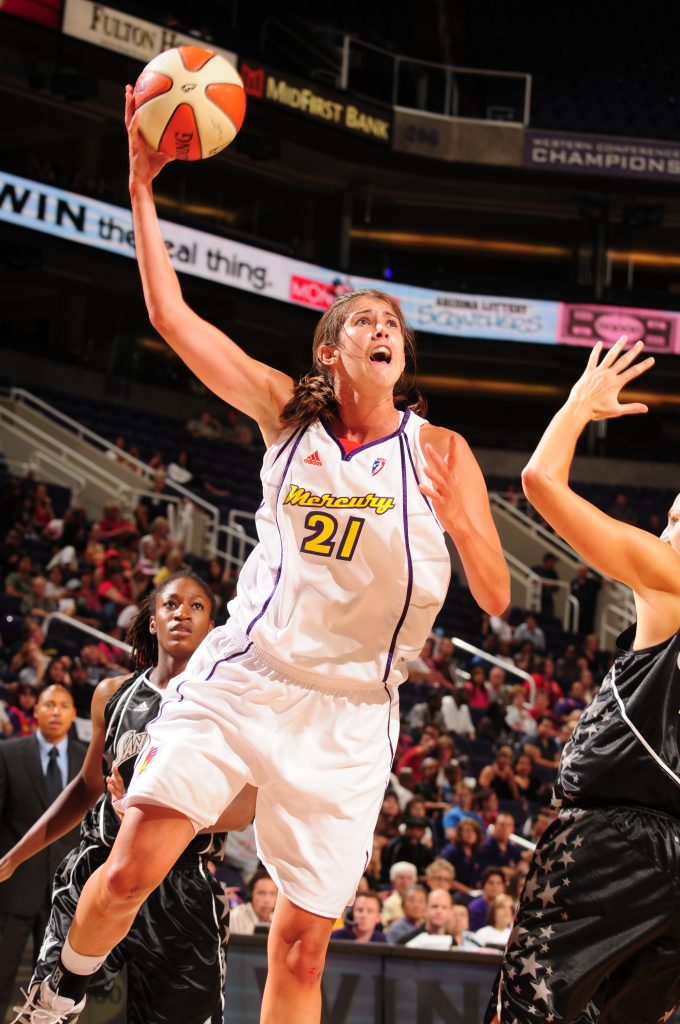 Smith sees some similarities when it comes to excelling in sports and in medicine—notably, possessing dedication to the mission. “With basketball, you can feel the progression from [playing as] a kid to really coming to understand the game, how it works, and seeing things for yourself with less and less guidance from a coach, knowing what you need to do,” she explained.
Smith sees some similarities when it comes to excelling in sports and in medicine—notably, possessing dedication to the mission. “With basketball, you can feel the progression from [playing as] a kid to really coming to understand the game, how it works, and seeing things for yourself with less and less guidance from a coach, knowing what you need to do,” she explained.
“Same with a career as a PA. At the beginning, you’re learning the basics in an academic setting so you can understand what you’re supposed to be able to do and putting that into actual practice. Then, you get to the point you feel like you know what you’re doing and still work within the team environment—similar to basketball, where there’s always that team environment.”
It’s not as if Smith turned to medicine because she lacked a future in sports, however. At 6’3″, she was a key player for the Cardinal, which has long been among the country’s top women’s collegiate basketball teams. After transferring back home after a year at Duke University, Smith averaged a solid 14.8 points per game in three seasons at Stanford, even leading the team in assists her senior year—highly unusual for a center at any level.
The Minnesota Lynx selected Smith in the second round of the Women’s National Basketball Association draft in 2007, but soon cut her. She landed with the Phoenix Mercury, where she played for three seasons, including the one in which the team won the WNBA Championship. That 2009 title took the Mercury to the White House for the victors’ traditional visit with the president. There, Smith led a fitness clinic.
She would play professionally in Italy for another five seasons. Italy’s economic troubles—Smith said she wasn’t paid the second half of her final season—and a desire to shape a more stable life in America prompted her to retire from basketball.
“I knew it was going to be a challenging transition [from basketball] and I wanted to do it before I got old, and when I’d still have time to start a second career,” Smith explained.
Keep Your Eye on the Ball
Her head coach at Stanford and one of the best ever in women’s collegiate and international hoops, Tara Vanderveer, is among those who’d figured Smith for a post-playing career with a clipboard, albeit not the medical variety.
“I kind of was hoping she’d go into coaching,” said Vanderveer, who has led Stanford to two national championships and coached the 1996 Olympic team to a gold medal.
That said, Vanderveer sees Smith becoming a successful PA because her head was always in the game—and in healthcare, “you don’t want someone who’s going to make a lot of mistakes,” she remarked.
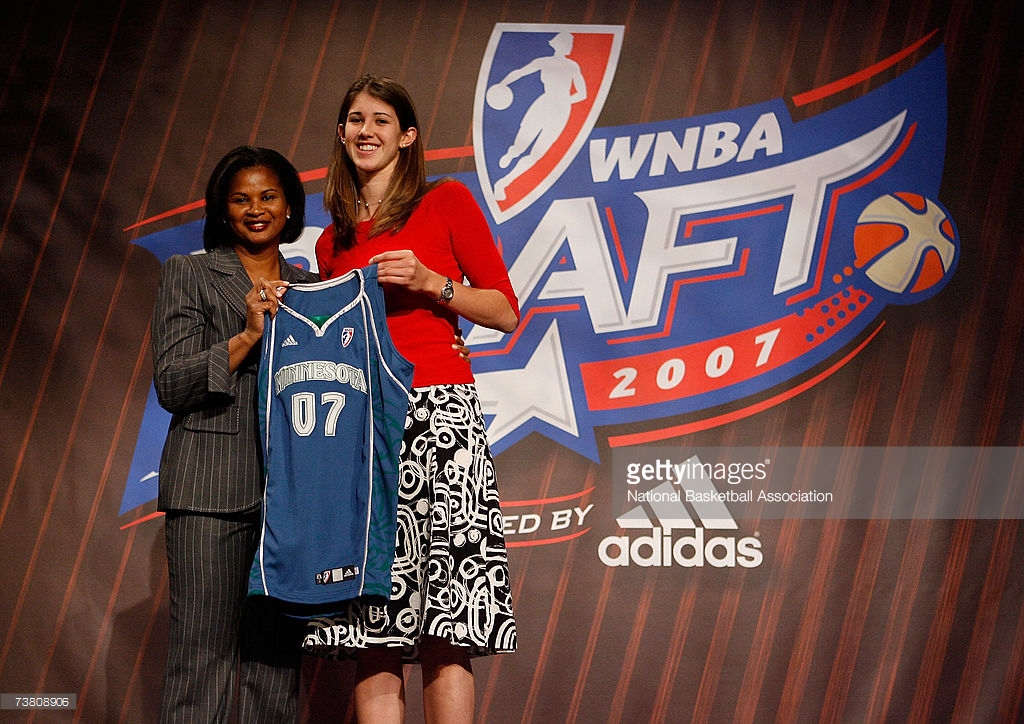
Vanderveer’s scouting report on her former player included some subtle parallels with the skills required of a medical professional.
“Brooke was a very intelligent player. She really understood the game of basketball and could make adjustments during a game, which is really rare, especially for front-court players. She was an extremely good post player. She had great back-to-the-basket moves and was deceptive—a very heady player,” Vanderveer said.
“She took a lot of charges, [while] a lot of post players want to block shots. She was a good passer, a good scorer, a good free-throw shooter. In end-of-game situations, you wanted the ball in her hands because she would knock down the free throws.”
There’s No “I” in Team
Smith isn’t the only former Cardinal to enter medicine. Several teammates have gone on to become physicians.
One of them, Krista Rappahahn Birnie, MD, remembers the novelty of the two walking together to basketball practice from a laboratory or a lecture—both majored in human biology—while reviewing what they’d just learned.
“We both knew we had a strong interest in medicine and hoped for careers in that field,” said Birnie, a neonatal hospitalist at Lucile Packard Children’s Hospital Stanford. “It was pretty fun and awesome to have [such] a teammate.”
Birnie looked back, but also down the road, regarding her ex-teammate. Smith, she said, “was a great team player, fun and a great person—someone
I’d love to work together with in medicine.”
Just as a physician and a PA collaborate in practice, one of each influenced Smith in her career choice.
The first was Elaine Lambert, MD, a rheumatologist who for 21 years served as the team doctor for the Stanford women’s basketball and volleyball teams. Lambert said she’d often approach players majoring in pre-med or the like and offer guidance with internships and applications to academic programs. Four years ago, Lambert introduced Smith to Rhonda Larsen, a PA administrator who was moving from the Duke PA program to Stanford’s.
At the time, Smith was preparing to apply to PA programs, and Larsen offered helpful advice on strengthening her applications by emphasizing her community service and international basketball experiences.
Smith “was doing her homework on the profession and deciding if this was something she really wanted to do,” Larsen, a clinical associate professor at Stanford’s School of Medicine, recalled.
Like Vanderveer, Larsen can see Smith succeeding in another role: as a PA in administration, as well as on the clinical side. “Leaders such as Brooke have so many paths to follow,” Larsen said. “She is a true leader—a very gifted, articulate young woman.”
Said Lambert: “She’s so personable. I can see her being terrific as a PA, delivering terrific care. All the things she brought to basketball—defining excellence—she’ll bring to her patients. There’s no question in my mind she’s going to be successful.”
Smith’s delivering assists to teammates showed that “she was unselfish [and] very giving on the court”—another parallel with her new profession,
Brennan noted.
“In medicine, that’s what you are: a caregiver. That’s a carryover from caring about your teammates in basketball,” he said.
Love and Basketball, Love and Medicine
In the NCAA tournament in March 2006, Smith delivered perhaps her finest performance in Cardinal crimson. She scored 35 points on other-worldly shooting (14 baskets in 16 attempts) and played all 40 minutes in an 88-74 upset of Oklahoma. The victory sent Stanford to the regional final, where a three-point loss to Louisiana State ended the Cardinal’s season one step from the Final Four.
That day, “Brooke absolutely dominated,” said Birnie, a guard who also played the entire game.
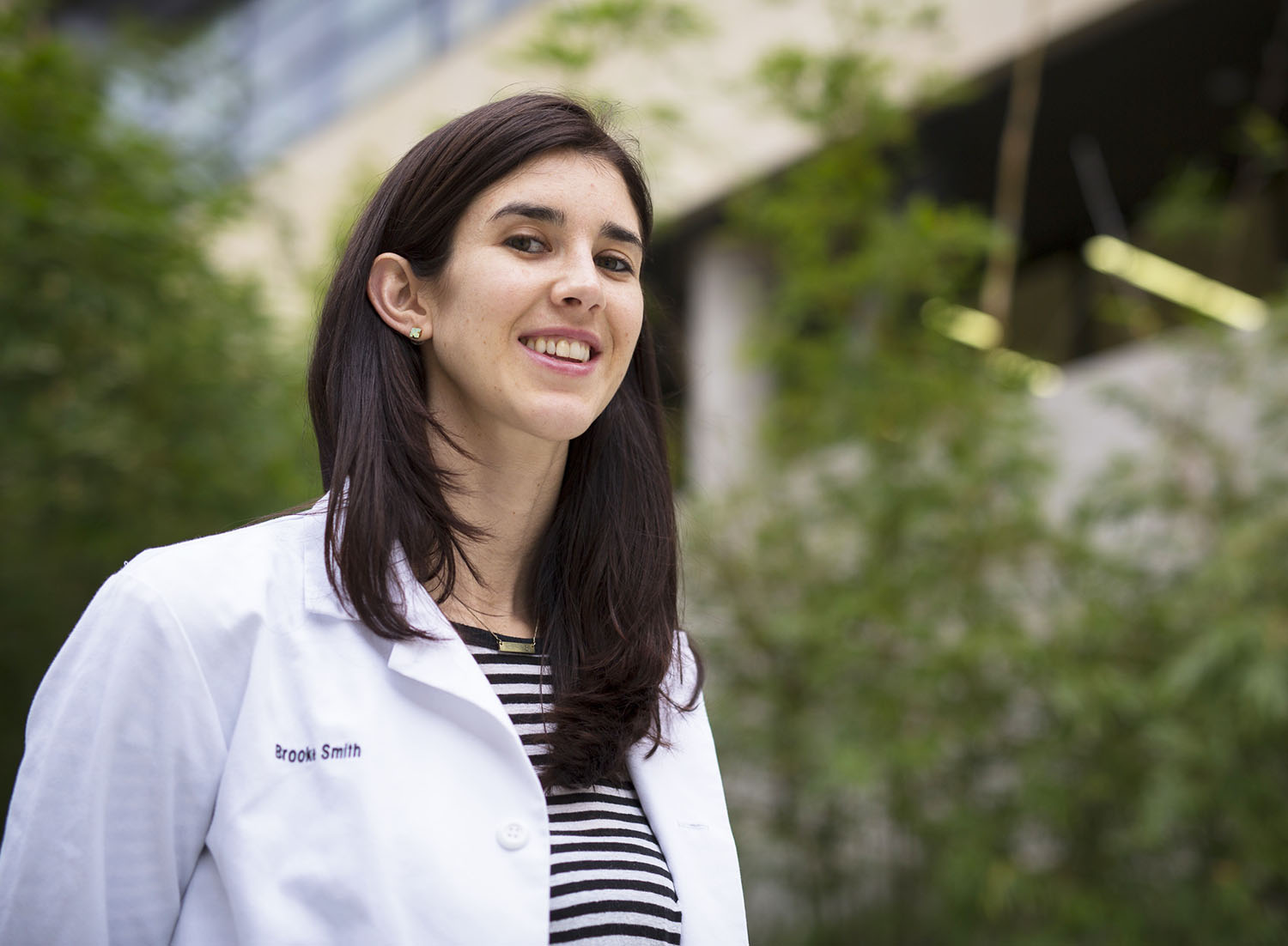 Vanderveer remains impressed with Smith’s ability to use her quickness to get around two bruising Oklahoma forwards, the twins Courtney and Ashley Paris, daughters of a former NFL player, Bubba Paris.
Vanderveer remains impressed with Smith’s ability to use her quickness to get around two bruising Oklahoma forwards, the twins Courtney and Ashley Paris, daughters of a former NFL player, Bubba Paris.
“That was some great competition,” said Vanderveer. “It wasn’t like it was against some chumps.”
Stanford sports remained central to Smith, even when time was at a premium because of her studies. She often attends men’s and women’s basketball games and tailgates during football season. Among her good friends is Larsen’s daughter Kiera, with whom Smith and her fiancé, Shane Easter, play pickup basketball and beach volleyball.
Leaving competitive basketball behind for a new career takes some adjustment, one Smith has embraced. In a couple of months she will join the bone marrow transplant team at Stanford Medical Center.
“I’ve always loved basketball, from the moment I put my first uniform on in fourth grade,” she said. Studying to become a PA, “having the opportunity to go to all these different preceptorships, work with different people, see these different styles and learn from them—it gives me a similar sort of feeling about something I’m doing. It’s been a great feeling to find again in something besides basketball.”
This article was originally featured in the June/July 2016 issue of PA Professional.
Hillel Kuttler is a Baltimore-based freelance writer and editor who has written about PAs and healthcare for many years. He can be reached by email.
Thank you for reading AAPA’s News Central
You have 2 articles left this month. Create a free account to read more stories, or become a member for more access to exclusive benefits! Already have an account? Log in.




